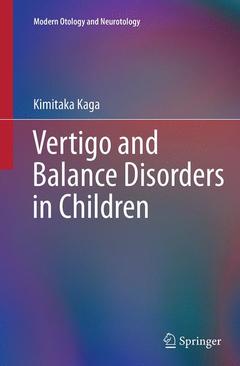Vertigo and Balance Disorders in Children, 2014 Modern Otology and Neurotology Series

Many congenitally deaf infants and children suffer vestibular failure, which produces problems with their postural control, locomotion and gait. However it is known that these children can eventually catch up with their normal balance control status in terms of development and growth as a result of central vestibular compensation. In Vertigo and Balance Disorders in Children the author provides comprehensive and integrative information on the vestibular system. The materials presented range from the history of its study, basic anatomy and physiology of vestibular organs, mechanism of balance and motor function development, to clinical aspects of vestibular disorders including their evaluation and pediatric neurology. Although there have been books discussing postural responses of infants and children with vestibular disorders, this is the first to present the influence of peripheral vestibular disorders and central vestibular compensation comprehensively. This book will benefit not only practitioners in this field such as pediatric otolaryngologists, pediatricians, child neurologists and neurologists, but also clinical specialists such as neonatologists, physical therapists and speech therapists, helping them to better care for patients with vestibular failure.
Date de parution : 08-2016
Ouvrage de 86 p.
15.5x23.5 cm
Disponible chez l'éditeur (délai d'approvisionnement : 15 jours).
Prix indicatif 94,94 €
Ajouter au panierDate de parution : 02-2014
Ouvrage de 86 p.
15.5x23.5 cm
Disponible chez l'éditeur (délai d'approvisionnement : 15 jours).
Prix indicatif 105,49 €
Ajouter au panier


